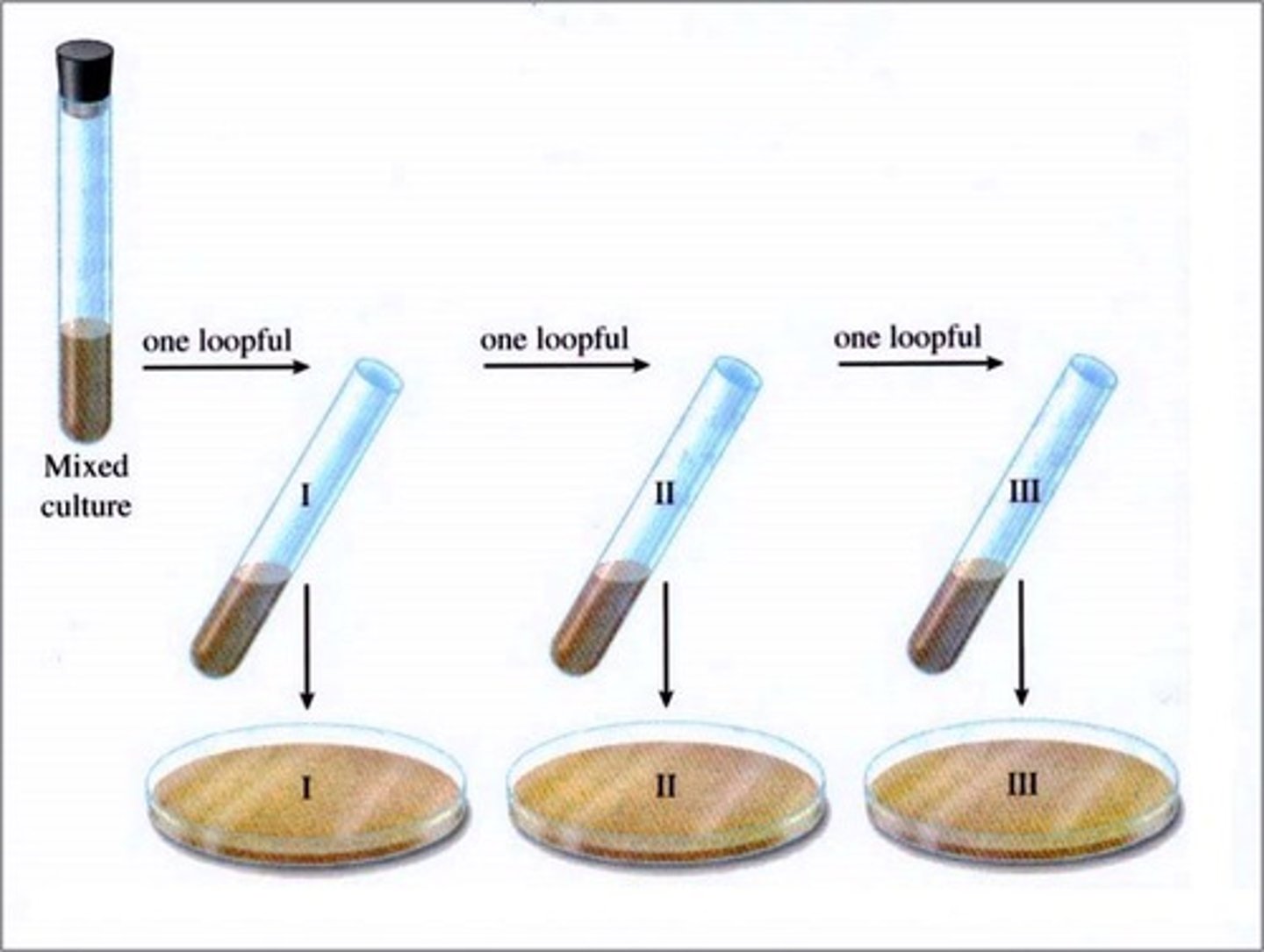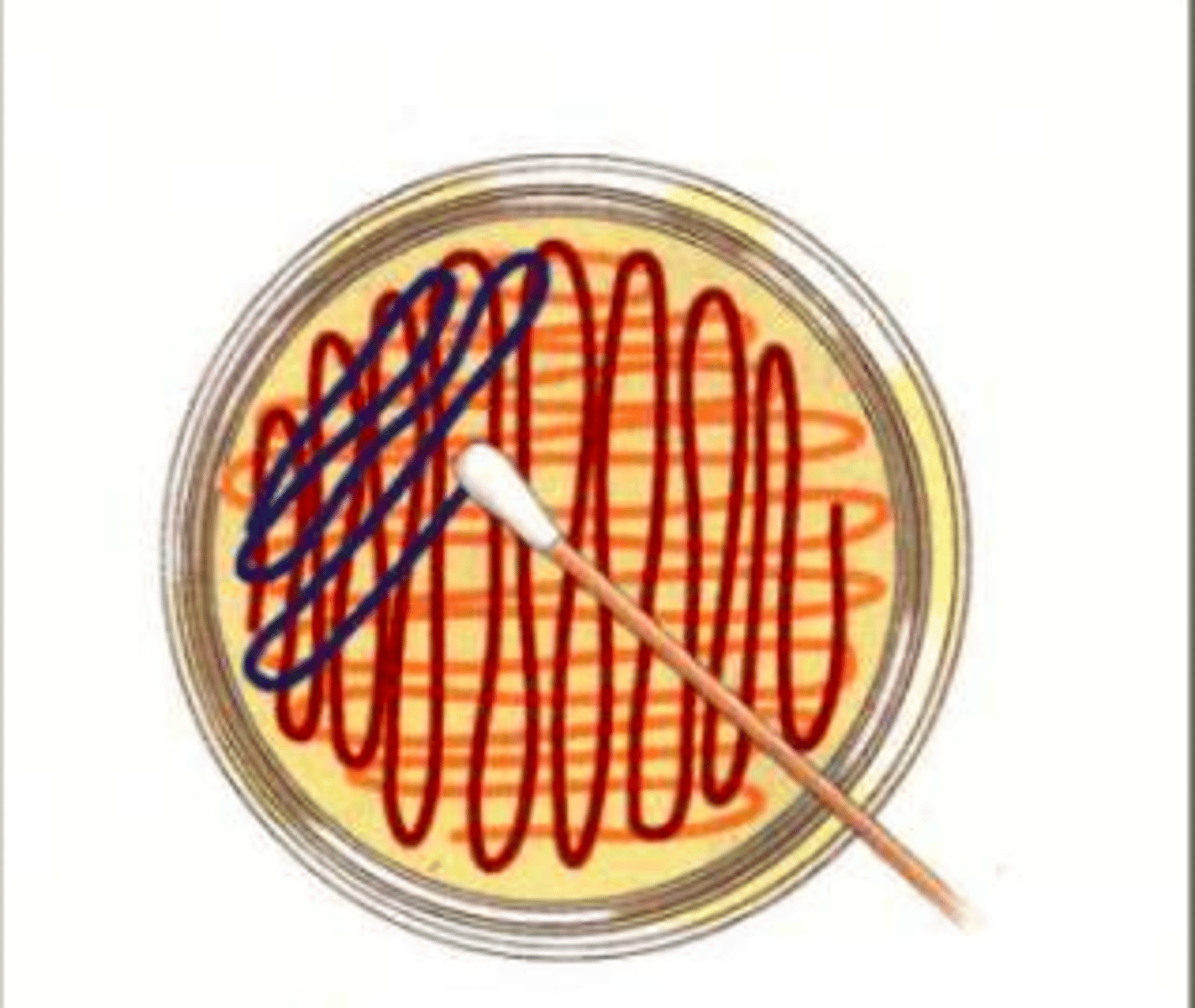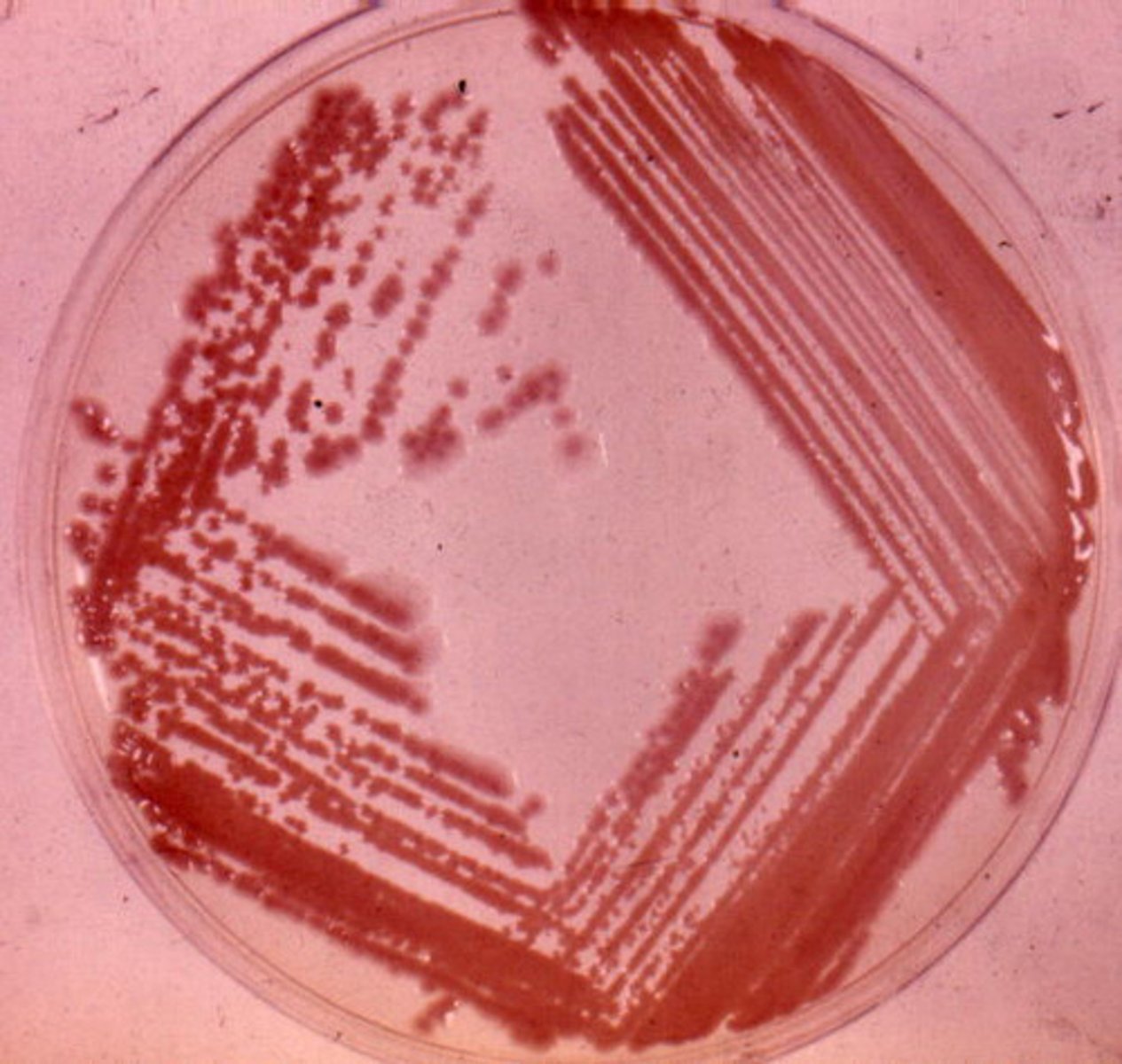How to Culture Microorganisms in the Lab
1/7
There's no tags or description
Looks like no tags are added yet.
Name | Mastery | Learn | Test | Matching | Spaced |
|---|
No study sessions yet.
8 Terms
Pour plate
Used to identify the number of colony forming units in a solution - may involve a serial dilution

Lawn plate
Use a spreader to spread out the bacterial colonies
These can be used to identify colonies that have been genetically engineered

Streak plate
Used to separate colonies of bacteria

Why do we use aseptic conditions?
To avoid any unwanted microbes that would:
- compete for nutrients
- change the conditions in a fermenter
- decrease the yield of product
- contaminate the batch
Plates should not be incubated at 35 degrees
Could lead to the growth of human pathogens
Flaming the neck of tube
Causes air to expand and push bacteria away, so less likely to settle in the tube.
Also kills bacteria on the neck of the tube
The lid should be held above the dish when adding solutions
Avoids contamination with bacteria from the air
When incubating the plate, they should be kept upside down
Prevents condensation droplets from forming on the lid and dripping onto the agar surface, which can contaminate the culture and interfere with colony growth